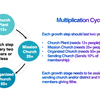"He was the sweetest man when we were dating,” Sally confided as she looked back on her 10-year marriage to Bob. “Bob seemed to change, starting on the honeymoon. But I didn’t really notice, I was so naïve and in love. Now, understanding more about abusive relationships, that first incident on the honeymoon I can see set the tone for what was to come.
"It was the second night we were married, and we went out to this great restaurant to eat. I put on a special new dress that my friends went together to buy for me. I loved it, and my friends said I looked great in it. When I put it on, Bob wasn’t as happy as I’d hoped. Then, that evening as we were eating, Bob became more and more sullen. I couldn’t figure out what was going on. Then Bob said, 'That guy over there is looking at you. Do you know him?' We were a thousand miles from home. I knew no one.
"'No, of course not,' I answered. 'What’s wrong?' Bob replied, 'It’s just that dress makes you look so good. All the men are staring at you.' We ate most of the meal in silence as Bob continued brooding.
"When we got to the room, I wanted to talk things out and reassure Bob that I loved only him, but it was not to be. Bob started talking in an angry but controlled tone of voice that I hadn’t heard before about how we’ve only been married one day and I’m already after other men. Bob began getting louder and more out of control about what a bad person I was and how my friends who helped me get the dress just wanted to break us up.
"I remember feeling terrified and confused. I did not know what to do. I prayed silently, of course, but beyond that, I had no clue about what was happening. When Bob’s anger grew to yelling, he stood up and grabbed my arms and squeezed them so tight I cried out. Holding me with one hand, Bob grabbed the dress and ripped it off from me. He said, 'There, now we won’t have to worry about you flaunting yourself anymore.' I started to cry, and Bob comforted me. He suddenly became like his old self—loving and caring. I was hopeful that it had been the stress of the wedding that caused this 'break' in his behavior.
"It was many years before I would see this behavior as a cycle of violence. Three or four months went by before Bob blew up again, but this time he threw a plate of food at me. He said I was a horrible cook and that he wasn’t going to eat 'slop.'
"Close to a year after we were married, the first physical incident happened. We went to another couple’s house for their child’s birthday celebration, and the women retreated to the kitchen after the meal to clean up. We finished cleaning up and I could see Bob was brewing, but I had no idea what could possibly be going on. I thought we were having a good time, and I went out of my way to stay as far away from other men as possible. When we reached home, Bob became enraged. He said that I had ignored him and purposely snubbed him at the party and for that I needed to be punished. He slapped my face so hard I was stunned. Bob punched me in the chest and stomach, and I fell down, pleading for him to stop. This time, Bob cried with me in the aftermath of the beating, and I was sure that it would be the last.
"It wasn’t. When our friends at church asked how my arms were bruised, I lied to protect Bob because he was an elder in the church, and I knew how much that position meant to him. Soon after that first physical incident, I became pregnant, and Bob said that now we were forever tied by a bloodline, that we would be together forever. The veiled threat was always present. I should not leave him, 'or else.' Just what 'or else' meant, I didn’t know, but I was scared to find out. I stayed with him until he began abusing our son. Then, I knew I had to leave."
This heartbreaking story leaves us questioning what can be done to help women and men in abusive situations. What can the church do to minister to its hurting members? The North Pacific Union Conference (NPUC) and the Upper Columbia Conference (UCC), in groundbreaking efforts to combat abuse and strengthen Adventist families, have undertaken two significant steps to address these issues.
Through a grant from the Steven’s Foundation, the NPUC leadership authorized a union-wide study conducted by the Institute for the Prevention of Addiction housed on the Andrews University campus. At the conclusion of the study, UCC has responded by providing office space for an exciting new ministry to coordinate all efforts for abused church members. This new ministry, Polly’s Place Network is led by executive director Mable Dunbar, who also serves as the UCC women’s ministries coordinator.
As promised in the November 2003 issue of the GLEANER, this article reports findings from the Strengthening Adventist Families study. The following results are based on 1,431 responses from church members. Because of the comprehensive nature of the survey, only highlights of the findings will be presented here, but a full report will be available in December by contacting Rene Drumm, project director[1].
While many denominations hesitate to examine domestic violence among their members, the leadership of the NPUC made the bold decision to bring these issues out of secrecy and deal with whatever the results revealed. The first research question the survey addressed was, “What is the prevalence of abusive behaviors that happen between Adventist couples in the NPUC?” To answer this question, the survey listed 30 behaviors that ranged on a continuum from controlling behaviors to physically abusive actions. The results revealed five specific behaviors experienced by 25 percent or more of the church members. These behaviors included having an intimate partner: (1) tell you what to do and expect obedience; (2) insult, swear at you, or call you names; (3) ignore or discount your accomplishments or activities; (4) make big family and household decisions without consulting you; and (5) limit your involvement with others.
In looking at these five most common negative behaviors, we can see that they primarily represent controlling and emotionally abusive actions. These types of controlling and emotionally abusive actions are often precursors for more violent and unhealthy behaviors[2]. While the greatest percentage of negative behaviors between intimate partners is not physically abusive, it implies that Adventist church members experience hurtful relationship dynamics. These unhealthy dynamics need to be addressed to prevent the escalation of negative actions and promote healthier families.
Examining physical abuse, the overall rate of lifetime victimization is 19 percent for women and nine percent for men. This compares to a national rate of 22 percent for women and seven percent for men[3]. This rate makes sense in light of other research findings that examine perpetration of violence. These findings indicate that among women, more conservative religious views are associated with higher rates of committing violence [4].
While victimization is as prevalent in our church as in the world, the study participants did some things to help themselves that people without a church family were perhaps not able to do. The survey asked a series of questions about past actions that people took in times of distress. The number-one, most common action people took to help themselves in difficult times was prayer. It is reassuring to know that in times of distress, our church members seek divine help as a first resort. Other things that at least 40 percent of the respondents said that they did in difficult times included talking the situation over with the person, talking it over with a friend, talking it over with a relative, talking it over with a church member, going to see the pastor, going to a professional counselor, and buying a self-help book about it.
Knowing what kinds of things people did to help themselves is useful because the primary predictor of future behavior is past behavior. Understanding the pathways people were already taking to help themselves offers insight into how to best fashion new initiatives that will be a natural fit.
Besides knowing the actions that people took to help themselves in times of difficulty, the study sought to understand just how helpful those actions were. The study found that not all of the most-used actions that people took proved to be the most helpful. Here we see that praying was the most relied-on action and that was also the most helpful in solving the problem. Talking the situation over directly with the person was much less helpful than people hoped, while talking the situation over with a friend and going to a professional counselor offered greater assistance.
While it is important to know what actions people have taken to help themselves and how helpful those actions are, it is also important to open up new possibilities for handling difficulties and for healing. The survey asked what respondents might do or recommend for themselves or a close friend in an abusive situation if the option was available. The most agreed-on activity was to encourage children to participate in abuse prevention programs. More than half of the respondents said they “would definitely” support such a program.
Other activities that more than 40 percent of the survey participants said they would definitely try included attending a church-sponsored workshop in strengthening relationships, talking to the pastor about the problem if he or she has specialized training in abusive issues, and reading books about violence supplied by the church.
The initial step available to church members in need is to call toll-free (877) 2POLLYS ((887) 276-5597) or visit www.pollysplacenetwork.com. Church leaders wanted to have a professional resource in place as this report was released. In establishing Polly’s Place Network, it is now possible for individuals to have the immediate professional response to guide them in strengthening their Adventist families.
[1] Rene D. Drumm, Southern Adventist University, Department of Social Work and Family Studies, Collegedale, TN 37363; rdrumm@southern.edu.
[2] Walker, Lenore. The Battered Women Syndrome. Springer: New York, 1984.
[3] Tjaden, Patricia, and Nancy Thoennes. Full Report of the Prevalence, Incidence, and Consequences of Violence against Women Research Report: Findings from the National Violence against Women Survey. U.S. Department of Justice/Centers for Disease Control and Prevention: Washington, D.C., November 2000.
[4] Brinkerhoff, M.B. "Religious Involvement and Spousal Violence: The Canadian Case." Journal for the Scientific Study of Religion, vol. 31. March 1992.







